A slow tire leak is more than just a nuisance. A leak can lead to low tire pressure. Not to mention, prolonged running on an underinflated tire can lead to more extensive tire damage or even cause a dangerous blowout.
If you’re experiencing a slow leak, here are some things to look for:A tire puncture: It is a common misconception that a puncture will cause the tire to immediately go flat. However, in many cases the object that caused the puncture remains lodged in the tire and prevents the air from leaking out quickly. As with all tire leaks, it is important not to ignore a puncture. Eventually the object will either wear down and/or work its way out of the tire. For more on this read our article How to Repair a Tire with a Safe, Permanent Fix.
Wheel damage: Another common cause for slow tire leaks is damage to the area where the tire bead meets the rim. This type of damage is typically cause by the driver hitting the curb, taking a speed bump at high speeds OR those dreaded potholes! The impact deforms the wheel’s metal surface which may cause the tire to pull away from the mounting surface of the wheel.
Valve stem damage: The third most common cause for slow tire leaks is worn out or damaged valve stems. Time, use and exposure to elements can cause your valve stems to wear out and cause leaks.
Diagnosing your tire leak:
If your vehicle is equipped with TPMS, you will know right away if you have a leak. If the sensor light on your dashboard goes off, you inflate all the tires back to proper pressure and the light goes back on a few days later – you likely have a leak. If your vehicle does not have TPMS, its important to check your tire pressure regularly.
Once you’ve identified that you have a leak, use TECH Chek to locate the source of your leak. Simply spray the product all around the tire. Where the surface of the tire begins to bubble is likely the source of your leak.
Where the surface of the tire begins to bubble is likely the source of your leak.
It’s important to have your tire diagnosed by a professionally trained tire shop or mobile tire repair service as soon as possible. In the case of a puncture, you may want to use a tire repair kit to keep your tire properly inflated until you can have it serviced. The leak should then be permanently fixed using a proper tire repair consisting of a cured rubber stem and repair unit.
If the leak is caused by a damaged valve, a trained tire technician can typically replace the valve at a minimal cost. In some cases, however, the tire may need replaced.
If the leak is caused by a damaged wheel, a tire technician may be able to reseat and seal the tire using a bead sealer. However, if the damage to the wheel is significant, unfortunately that means you may need to replace the wheel itself.
To read more about the types of damage that can and cannot be repaired, click here!
Not only is having slow leaks in your car tires annoying, but it can also compromise your road safety, fuel economy, and tires' lifespan.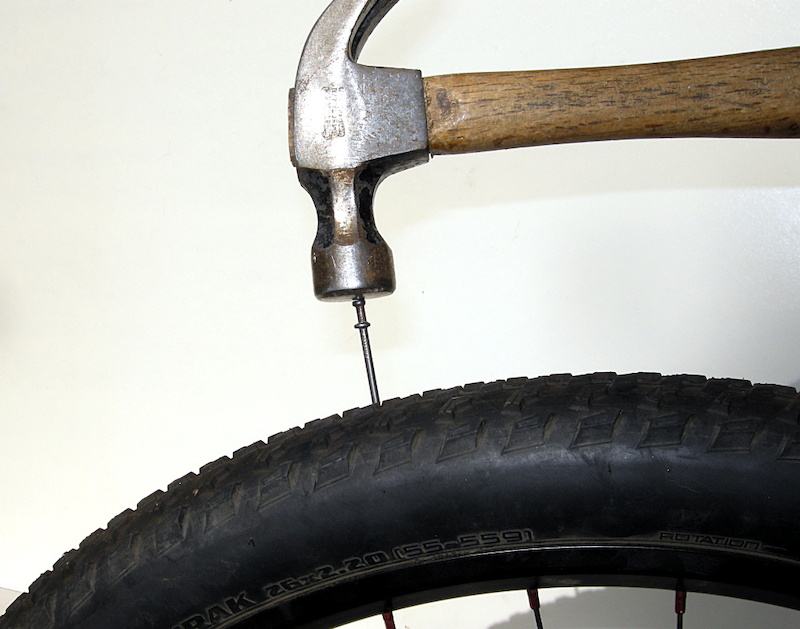 There are several common causes of slow tire leaks, and it's not always easy to determine which is affecting your tires.
There are several common causes of slow tire leaks, and it's not always easy to determine which is affecting your tires.
Learn how to tell if your tire is losing air, what can cause the issue, and how to stop slow leaks for good.
Tires naturally lose about 1 psi of air per month and should be monitored regularly. A slow tire leak occurs when your tire gradually loses more than this typical air loss. Over time, air leakage can cause a flat or underinflated tire. The source of the leak can be challenging to detect, and unlike a big tire puncture, you'll rarely hear hissing noises when they occur. Each part of a tire is susceptible to slow leaks, making the cause of air loss that much harder to detect.
The first thing you'll probably notice is an illuminated Tire Pressure Monitoring System (TPMS) warning signal on your dashboard, if equipped. The TPMS monitors tire pressure and notifies you when there's a significant PSI issue.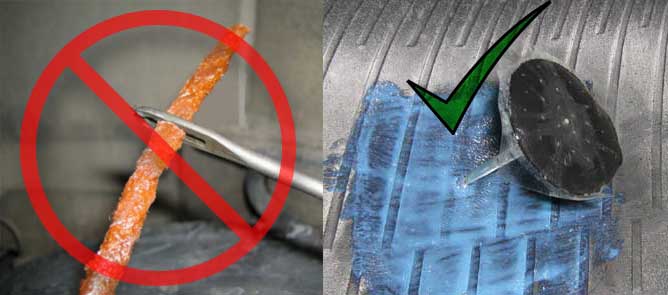
If your TPMS sensor frequently lets you know that one or more of your tires are low in pressure, the chances are likely that you have a slow leak. You can inflate your tires on your next gas pump visit, but if the problem persists, stop by your local Firestone Complete Auto Care center and let us have a look.
Many drivers wonder, “why do my tires keep losing air?” But, slow tire leak causes vary from tiny punctures to wheel and valve stem damage. Whatever the cause, it's essential to prevent air leakage. Driving on a tire with a slow leak can worsen its condition and impair your vehicle's handling, which can be dangerous.
Here are the most common reasons for slow-leak tires.
Tire punctures don't always result in immediate flats or blowouts. In fact, sharp objects like nails, screws, rocks, broken glass, and other road debris can get lodged in the tire and keep the tire "functional" as the air is slowly leaking.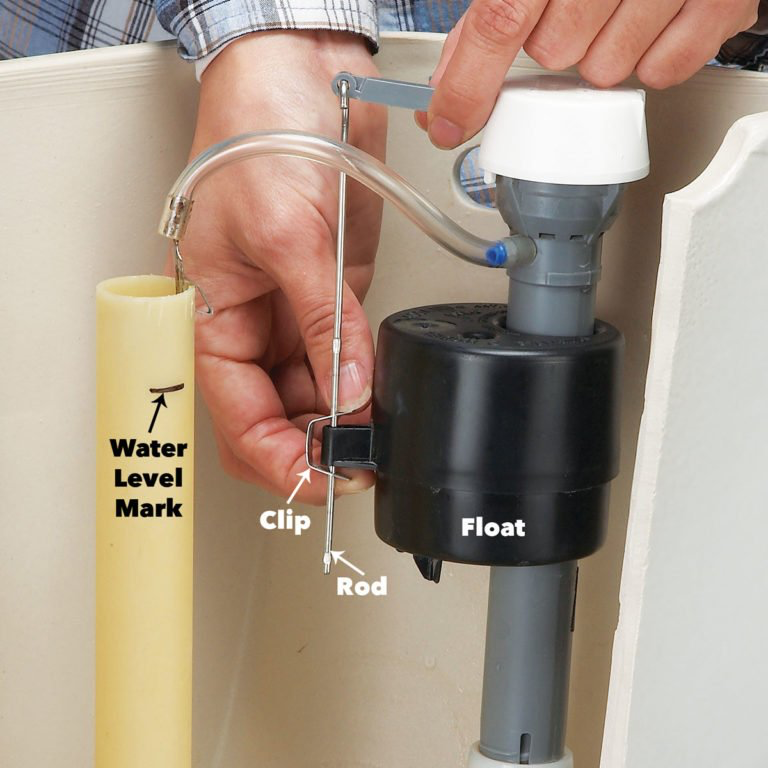 Other times, a sharp object may make a tiny hole and fall out, but you may not notice the immediate effect since the puncture is mild.
Other times, a sharp object may make a tiny hole and fall out, but you may not notice the immediate effect since the puncture is mild.
If your tire is still in good shape and the puncture is repairable, Firestone Complete Auto Care tire repair experts may be able to patch your tire. The solution may be as simple as a tire patch and plug if the puncture is addressed early on.
The valve stem is a part of the wheel that helps regulate tire air pressure. You can release the air or inflate your tires through it. This valve stem is comprised of a few different parts, mainly the valve stem core and the valve stem cap. If you lose the cap, dirt and debris may get stuck around the valve stem core, which can cause air leakage. The valve stem can also become corroded, brittle, or cracked due to combinations of moisture, road salt, chemicals, and age.
It's a good idea to replace your valve stems every time you get a new set of tires. That way, you can help prevent this issue and save yourself the headache of slow tire leaks. That's why our technicians at Firestone Complete Auto Care replace rubber valve stems or install the TPMS service kits with every new tire installation!
That's why our technicians at Firestone Complete Auto Care replace rubber valve stems or install the TPMS service kits with every new tire installation!
Slow tire leaks can also occur where the tire bead meets the wheel's rim. The tire bead should snugly fit the rim because it seals the tire to the wheel for proper inflation. However, the rim can corrode from exposure to road salt and other aggressive agents, leading to tiny crevices where air can escape through the bead-rim connection.
Rim leaks can also result from damaged wheels. So, if you hit a curb or hit a pothole, your slow leaks may come from a damaged rim. Whatever the cause of tire bead leaks, Firestone Complete Auto Care technicians can get to the bottom of it. We can reseat the tire bead or replace the wheels or replace the tire if necessary. Not all tire bead leaks require replacing the wheel, but some do.
Tire damage can develop due to normal wear over their lifespan. Sometimes there is nothing you can do but install new tires. The tread on your tires can wear down, leading to reduced traction and potentially dangerous driving conditions. But worn-down tires can also start leaking air through tiny cracks. Tires should generally be replaced every 25,000 to 50,000 miles, depending on tire condition, the vehicle manufacturer, driving habits, and local road conditions.
Sometimes there is nothing you can do but install new tires. The tread on your tires can wear down, leading to reduced traction and potentially dangerous driving conditions. But worn-down tires can also start leaking air through tiny cracks. Tires should generally be replaced every 25,000 to 50,000 miles, depending on tire condition, the vehicle manufacturer, driving habits, and local road conditions.
Shop tires by vehicle, tire size, and tire type, and book an installation appointment at your local Firestone Complete Auto Care shop today.
To stop a slow leak from a car tire, you first need to diagnose the issue. Then, the tire, wheel, or valve stem can either be repaired or replaced. To diagnose a slow leak yourself, apply soapy water on the tire treads, sidewalls, around the valve stem, and the tire bead area. Leave the soapy tire for a few minutes, and then inspect it for any localized bubbly patches.
Finding slow air leaks can be very tricky so don't feel discouraged if you fail to do it yourself. Visit any of our centers, and our experienced technicians will detect the issue promptly.
Visit any of our centers, and our experienced technicians will detect the issue promptly.
Slow tire leaks are challenging to address, so we recommend scheduling an appointment at your local Firestone Complete Auto Care and letting our experts do everything for you. Our Firestone technicians will provide you with a free courtesy check or a complete vehicle inspection. It's our goal to help you get your car in tip-top shape. Schedule your appointment, and we'll fix your tires’ slow air leaks in no time. Most of our stores are open nights and weekends, so we are usually available when you are.
In connection with the transition to winter tires, the question arose in my head, how to achieve complete and long-term sealing when landing tubeless!? It is known about corrosion on humps from the inside, but I specially in the spring peeled off these places with a drill and a brush, primed, painted, made sure that the installer smeared it with black when landing with this compound (by the way, what is it?). but still had to pump up at least once every two weeks. What can I say — I even have a new car with forged wheels and tires Bridge — half the atmosphere goes in two weeks!
but still had to pump up at least once every two weeks. What can I say — I even have a new car with forged wheels and tires Bridge — half the atmosphere goes in two weeks!
And in winter the situation will be worse, apparently.
You can, of course, smear the gap in a circle with transparent silicone, but. smacks of a collective farm and finally I want to solve the issue in the bud! :hysteric:
Who has any ideas?
How often do you pump?
if the edge of the rim is evenly sanded and painted, then the rest is in the sealant. It’s not the white soap that is usually used in tire fitting, namely the special sealant, the installers have it, but they save it and smear this rubbish soap-mastic. I warned the sealant at different times, from afar I observe and they, as if on purpose with soap, I force them to wipe everything with a rag and then smear it with sealant, the sealant is like thickening a transmission with lithol, black-brown, gradually dries and sticks.
You also need to look and change the nipples completely, nipple, there are Chinese rubbish, dangerous, but there are good ones.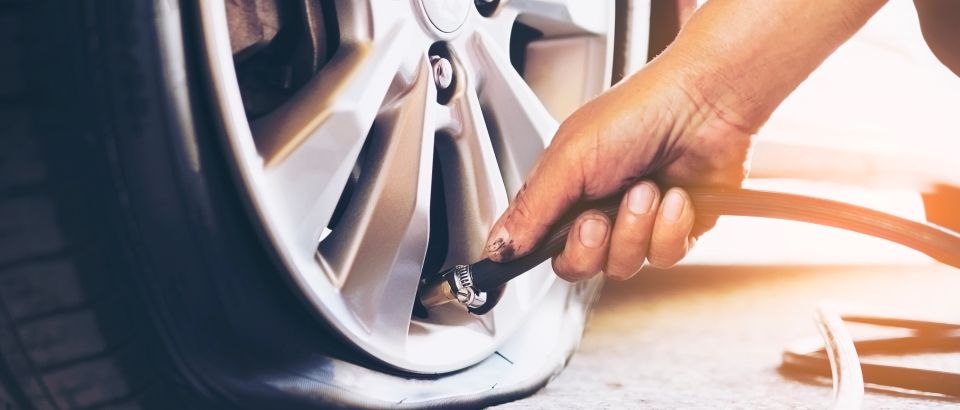 Its hole on the disk can also be smeared with sealant.
Its hole on the disk can also be smeared with sealant.
On soap, even branded factory l. disks from soap begin to descend in 2-3 weeks.
A sealant for a very long time, pressure control once every half a year.
@lelik, the paint on the hump is most likely coming off. Before putting on all the humps on the old disks, I rubbed it with a knife so that they would blam, and then assembled it with a sealant. Pah-pah 2 years left, the 3rd went.
One even bubbled with sealant, let it down, stuffed another abro into it with a strip of cardboard, but there was no way to pump it, it snorted from both sides. I felt it with my hands, pressed it, it pumped up, it stopped poisoning. There, in Hakka, the inner belt is very narrow and there is an entry to the outer edge of the disk, which does not enter everywhere. Previously, they stood without this mound. And it bubbled under the weight, I pulled it a little, a millimeter, it stopped. I think it's the same tires. Because the kama is ancient, it didn’t poison, the bridge was also all cracked, it held.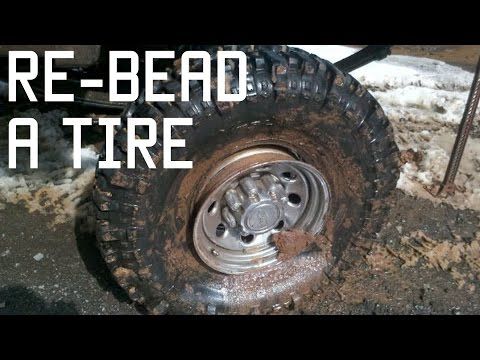
Added after 6 minutes 0 seconds
I'm shocked in short. Either try to rearrange them for casting, or get rid of them.
I will add to this topic a few of my thoughts and what I encountered when preparing tires.
In my automotive life, it so happened that I drove most of it on diagonal tube tires, and even when in 98 the 29th appeared for personal use, which has tubeless tires in its design. There were chambers in her tires and I did not take them out, because up to a speed of 130 km / h they can be operated for quite a long time, and my cruising speed has always been somewhere around 100 km / h. But on those disks, on a 14 "hump - a locking collar for the tire bead - for some reason there was one and only on the outside.
In the fall, my son brought me an almost new studded wheel from 3110 KAMA-EURO, but on a rusty and native 10-shnoy forging. Pumped up. A day later it went down to "0". I looked through the entire treadmill - there are no punctures, which means it poisons the rim. It’s a long way to go from the garage to the tire shop, but I must say that all my life I’ve always overboarded myself on personal cars “once” — my grandfather taught me since childhood. Therefore, I decided to overboard myself and what came of it:
It’s a long way to go from the garage to the tire shop, but I must say that all my life I’ve always overboarded myself on personal cars “once” — my grandfather taught me since childhood. Therefore, I decided to overboard myself and what came of it:
1. The tire beads sat very firmly and to tear them off the rim flanges with mounts without damaging the inner surfaces of the beads - it is simply impossible, although both mounts were correct - they were still from my first car - VICTORY GAZ M20 1946 years old - Properly drawn and polished over 40 years of service with all four edges.
Therefore, I welded an appropriate stop to the garage box - three tons of separation - under the hydraulic jack and slowly and easily removed both sides of the tire from the humps. In the first photo.
2. But then the most interesting thing began - how to remove the tire without damaging the rim flanges - the rubber on them is soft and very tender, and it's clear why. And the seating surfaces of a tube bias tire just look like oak compared to them.
Each movement of the crowbar along the edge of the rim strove to wrap the rubber and pull out a piece! But there was a way out here too - neutral ordinary silicone grease was sprayed on every movement of the mount and things started to work.
3. The valve of a tubeless wheel is simply not inserted into the disc by hand - it was transported for more than an hour, but never installed. I had to buy an installer key, and having lubricated the hole in the disk and the valve seat with bead sealant for tubeless tires, in one motion quickly and easily installed the valve in place. Photo 2.
4. Having prepared the disk, having carefully sanded the landing shelves and humps, galvanizing, priming and painting the disk, proceeded to the assembly. And again, a can of silicone grease came into play. The slightest movement was lubricated - rim - mounting - tire. After the tire was put on the disk, the main thing was to put the tire on the rim shelves hermetically evenly and without distortions.
When 2410 went to the people in 1985, they already had tubeless tires, but the sealant for the bead of tubeless tires at that time was in great short supply and many owners and taxi drivers instead used the usual BSK alcohol-castor liquid, mainly the color of red wine, consisting of butyl alcohol and castor oil. And this connection worked and sealed perfectly! Even today, this sealing method can be recommended to those who have had to re-bead the tire themselves, far from civilization.
Well, I bought a can of ordinary tire bead sealant - photo 3- (320r. - enough for 4 wheels, if not spilled) and painted the surface of the rim with it from the hump to the edge of the rim. Then you need to pump up, that is, put the board on the shelf immediately, and not go for a smoke - after 20 minutes it hardens and sealing may not work, because the excess sealant immediately squeezes the board out, and apply with a brush - it is attached from the inside to the lid (photo 4) perfectly evenly impossible. Therefore, do not yawn!
Therefore, do not yawn!
5. There is a compressor in the garage and put the beads on the rim shelves, inflating the tire until it is fully seated, then release the pressure completely, inspect it, and pump it up to 2 kg. - not difficult.
Yes, the sealant itself looks like an ordinary liquid rubber, I had a Barnaul chemical plant, which polymerizes well under the action of oxygen in the air, i.e. hardens and turns into a rather elastic, but tenacious rubber - you can’t tear it off the tire with your fingernail.
6. The Voronezh degreaser was used as a silicone remover and surface degreaser - it is the most neutral of all solvents of the toluene group, and the least toxic and degreases any surface very well, without dissolving the paint. After that, the wheel stood for a day in the garage against the wall for non-descent and gladly took the place of a full-fledged winter spare tire in the trunk.
CONCLUSION: 160 re for changing shoes for one wheel and half an hour of time are indisputably cheaper than:
- all installation tools,
- half a day of time,
- and there is a complete lack of guarantee that you will not damage the tire bead.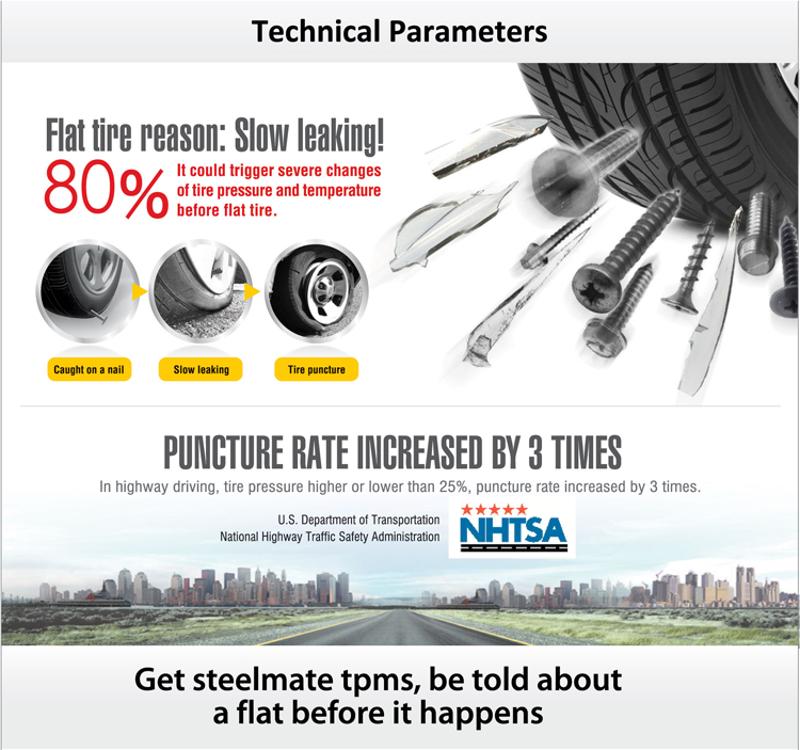
If there is a large and non-adhering shell from accidental tearing out of the bead rubber, where will the new tire go? That's right - OUT! Or in extreme cases - on the chamber version. Therefore, before deciding on this perversion, you should think carefully - whether you can and need it. I just wanted to try. Happened. And I hope that I will not be perverted in this way any more. But for some reason I’m now looking at a summer tire and a disk - I also need to assemble it by summer - and something tells me (more precisely, my favorite organ) that now this is not the last. an act in this area - unless, of course, you make a simple and reliable bead dismantler = you turn the drive handle through the bike chain with your hand, the blade goes in a circle and easily lifts the bead from the wheel rim mounted on an unnecessary and worn hub. But I didn't tell you that.
Source forum.allgaz.ru
The search for solutions on the topic: what to do if a flat tire between the disc and the tire should be timely and fast. It means that you need to notice the regular descent of the slope when it is slowly poisoning, and obviously until the moment when you have to leave the track on a long journey.
It means that you need to notice the regular descent of the slope when it is slowly poisoning, and obviously until the moment when you have to leave the track on a long journey.
It's easy to do: since almost all cars now have tubeless tires, the air from them descends slowly with small defects. You can drive, noting only a slight pull towards the flat tire. But in the morning, sitting behind the wheel, it is absolutely easy to pay attention to the fact that the wheel has sunk.
Even inexperienced drivers quickly begin to carry a pressure gauge in the trunk with them. And on a number of models (Opel, Skoda, some representatives of the Hyundai family), a pressure gauge is even included in the package of on-board instrumentation. A primary school student will also be able to use it, and measurements will not take much time. Clarify the causes of blown wheels and take action as soon as a problem is detected. Otherwise, it will stand up to its full height and turn into an unpleasant sideways somewhere far from the centers of civilization, and even outside the mobile communication zone.![]()
What to do if a flat tire is between the rim and the tire? First of all, find out what caused this phenomenon. And in the second - to save the existing ramp or buy a new one.
Confident replacement of old tubeless tires with tubes inside is explained by several of their advantages at once.
Tubeless tires maintain pressure by sealing the rubber-to-rim interface.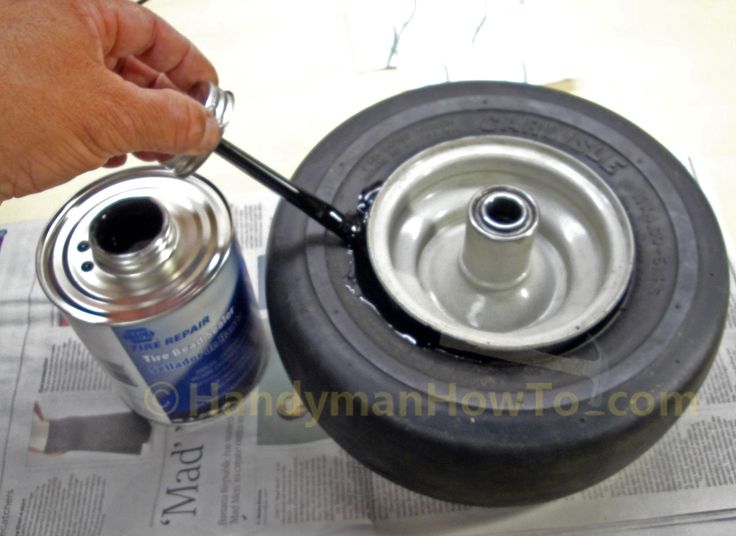 It is achieved by applying a special composition around the entire circumference of their contact. However, in some cases, with the visual integrity of the tire, there is a clear bleeding of air from it. And it happens exactly at the junction.
It is achieved by applying a special composition around the entire circumference of their contact. However, in some cases, with the visual integrity of the tire, there is a clear bleeding of air from it. And it happens exactly at the junction.
There may be several motivating reasons:
Apart from the wear of the tire itself, everything else can be repaired.
What you do depends on both the situation and the condition of the individual tire components.
 That is:
That is: So you can decide what to do if a flat tire between the disc and the tire is possible only if you know the outgoing conditions. In the open field - by any means to get to the places marked by civilization, in the home - to deal in detail with the causes and eliminate them.
Source autoflit.ru
If a close inspection of the flat tire does not reveal a puncture, it is likely that the leak could be caused by a pinhole in the tread or sidewall. However, the problem may not be in the tire. The air valve stem may be leaking and must be replaced, otherwise the tire bead (when it meets the wheel) may be pressed tightly against the rim (a common problem in areas where road salt is used, which can corrode the metal surface).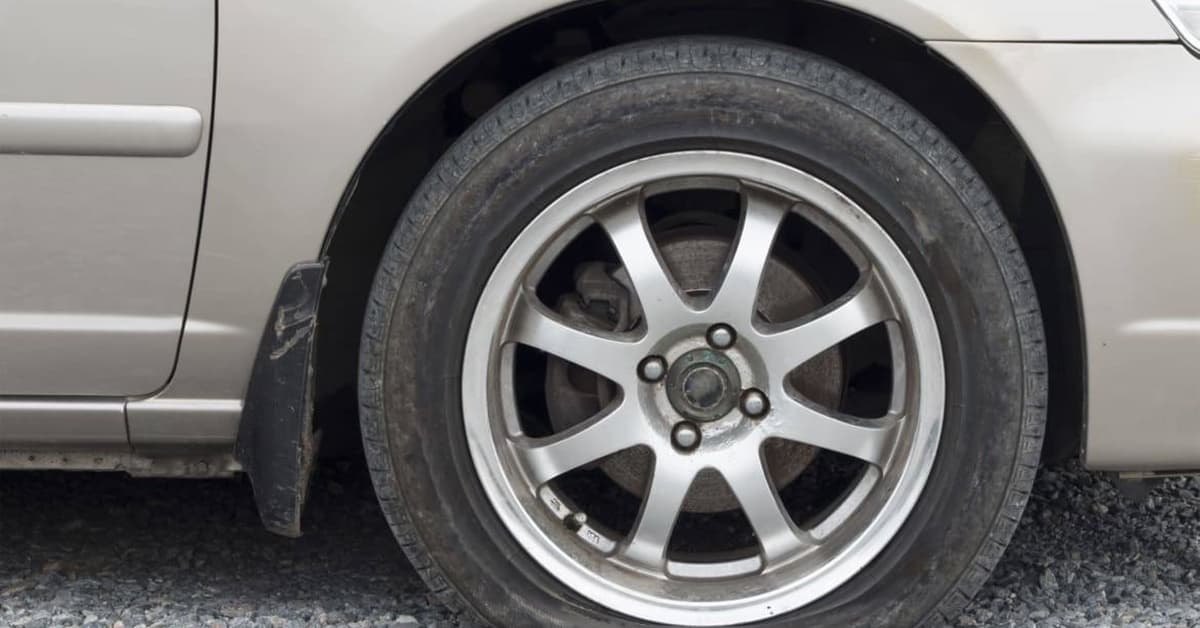
Soap and water or water alone can help find the source of the leak. Mix liquid soap with water in a spray bottle. Spray all parts of the tire - tread, sidewalls, valve stem and bore (with cap removed), and along the rim on both sides - until you find a spot where there are bubbles. This is where the air comes out. This is easier to do with the wheel off, but you might be able to find the leak without removing the wheel, especially at the front when turning the steering wheel exposes the inner sidewall somewhat.
Another method is to remove the wheel and soak it in a bath of water. Bubbles form at the leak. If the tub is not large enough to wet the entire tire, do the procedure several times.
Small holes in the tread can be repaired. Large punctures cannot, and minor damage to the sidewalls (where the tread and sidewall meet) will usually require tire replacement. Leaks and valve stems (the tiny valve itself inside the tube) can also be replaced.
If the leak is due to the tire not being completely seated, sometimes removing the tire and applying bead sealant can stop the leak.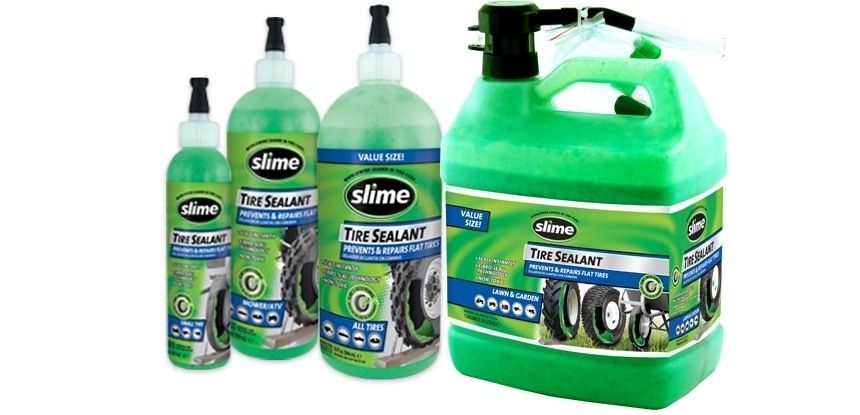
Possible solutions for leaks from the wheel seat are to remove the tire, de-corrosion and apply ball sealant before remounting the tire. Some mechanics also suggest inflating a tire with nitrogen instead of air because its molecules are larger than oxygen, potentially making them less able to slip through the smallest holes. Perhaps this is the solution, since nitrogen contains less moisture - this will prevent rust if the wheel is made of steel.
When a wheel leaks air, it will decide whether it can be repaired or should be replaced. For example, pitting a wheel can make the metal porous and allow air to seep through. This probably justifies a replacement.
Source www.sdelalsam.su
No one is immune from such trouble: the wheel suddenly depressurized, and the driver, who was quietly sitting in a comfortable cabin a minute ago, faces a problem: what to do about it?
Let's start with the fact that a tire puncture on a modern car still needs to be noticed. Therefore, the driver needs to monitor the force on the steering wheel, the noise from the wheels and the tire pressure indicators on the instrument panel (if any). If a punctured wheel is not noticed in time, the tire will be completely chewed up and the issue of its repair will be removed: only a replacement.
But we will proceed from the fact that the puncture was noticed in time. If there are signs of a flat tire - the car is pulling to the side, a rumble or rhythmic noise from the side of the wheel, wagging the stern - you need to gradually reduce the speed and slowly pull over to the side of the road in a safe place. Dealing with a flat tire right on the roadway is dangerous, you should not do this.
Not in all cases, the driver can solve the problem of a flat tire on his own. But you need to try to find a puncture or air leak in order to immediately decide on a strategy for solving the problem.
 It depends on him what to do next. You can more accurately note the puncture by watering the suspicious place with water: the outgoing air will bubble a film of water that has lingered on the rubber.
It depends on him what to do next. You can more accurately note the puncture by watering the suspicious place with water: the outgoing air will bubble a film of water that has lingered on the rubber. 
 A leak due to corrosion is “cured” after disassembling the wheel, but the advantage of such a malfunction is that the tire loses air rather slowly because of it.
A leak due to corrosion is “cured” after disassembling the wheel, but the advantage of such a malfunction is that the tire loses air rather slowly because of it.
First of all, do not immediately remove the flat tire to repair it or change it to a spare tire. Try to determine the intensity of the air leak. It may be easier to pump up a flat tire with a compressor or pump and drive to the nearest tire shop, where professionals will take care of it. In some cases, for example, if two wheels are damaged with one available spare tire, only periodically pumping up a better preserved tire and you can get to the service station. “Promising” in this regard is a leak at the place where the tire fits on the rim and a puncture on the tread - usually such damage does not lead to an intensive release of air, that is, by pumping up the wheel, it is quite possible to get to the workshop.
If the decision is made to have the wheel repaired on site, follow these tips.